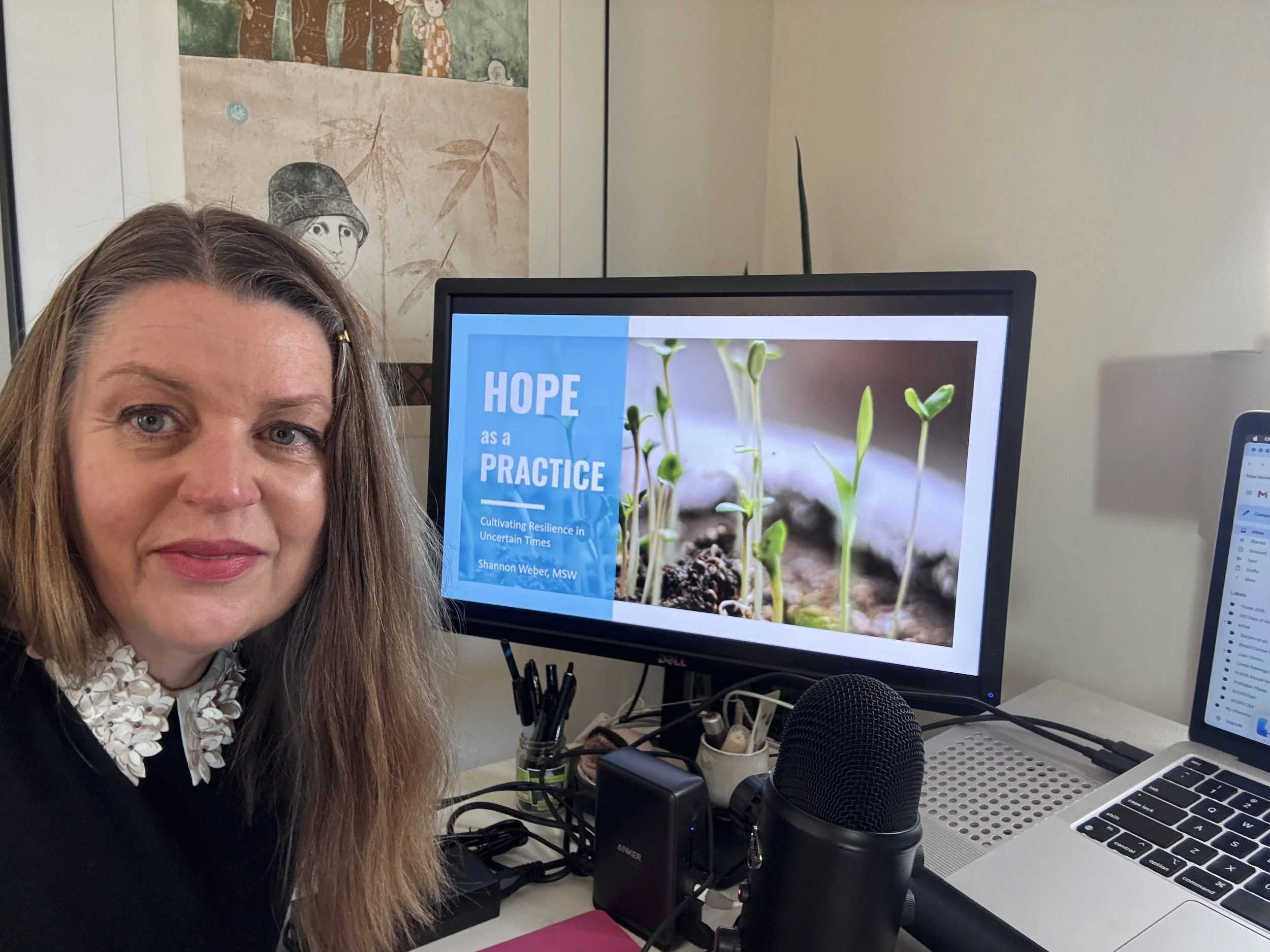Early morning hope.
I woke up at 5:15 AM to share hope practices with a team on the other side of the country. As I sat at my desk with my coffee, my computer screen glowing with faces from another time zone, I realized a familiar feeling inside: Finding my way to hope is like writing love notes for me.
For the past year, I've been deep in an inquiry into hope and respair (a beautiful word from the 1500’s meaning "fresh hope" or "to recover from despair"). This led to creating the 100 Days of Hope program—a body of work exploring how we can cultivate hope as a skill, not just a feeling.
What I've learned is that hope is a skill, and investing in my hope muscle is a choice. I might have fear or shrinking back as my innate response. (Yes, world events feel entirely overwhelming whenever I am paying attention. I choose to stay awake.)
But, just like love, hope can be the thing I anchor my response to. Hope, just like love, can become a practice daily. It's the small, repeatable acts I take that change myself to change the world around me.
In the Hope as a Practice workshop, we talked about "hope alerts"—those moments when you are atuned to a hope signal around you. Like how a propagated plant on my bookshelf became fresh hope after loss. Or how a librarian's dedication sparked imagination about invisible hope networks all around us.
One of the ways I am loving you: by practicing hope.
Because here's what I know to be true—when I apprentice myself to respair, when I choose to notice what sparks hope, when I allow myself to imagine another way forward, I become dangerous to the status quo. Mine and ours.
What shifts when we notice what sparks hope? What if our individual hope alerts create ripples to connect us to each other?
I'm curious—what would it look like to notice one hope alert today? To pause and really let it change how you move through the rest of your day?
We need each other in respair.
